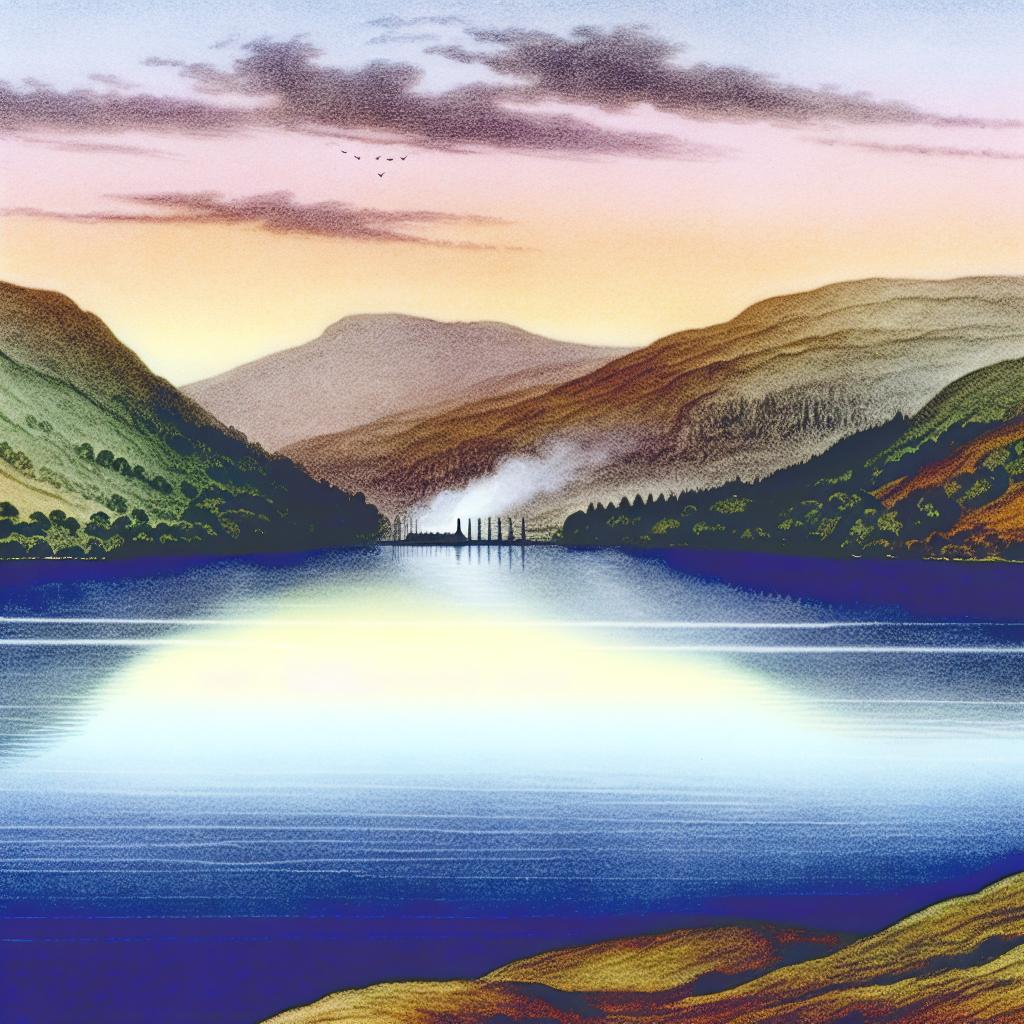Overview of Loch Katrine
Loch Katrine, located in the picturesque Trossachs region of Scotland, boasts more than just natural beauty and literary connections. Beyond its serene landscape and cultural resonance, Loch Katrine plays a crucial role in supplying fresh water to the city of Glasgow. What follows is an exploration of the history, development, and ongoing significance of this critical water source.
The Importance of Loch Katrine
Sitting within the Stirling district, Loch Katrine is a freshwater loch approximately 13 kilometers long and up to 1 kilometer wide. Its importance largely derives from its ability to supply a significant volume of water, meeting the needs of Glasgow’s vast population. The loch’s substantial size and strategic location render it an ideal water resource.
Historical Background
The development of Loch Katrine’s water supply system traces back to the mid-19th century. In 1859, the project was initiated under the guidance of civil engineer John Frederick Bateman. The aim was to cater to the burgeoning need for potable water in Glasgow. As industrialization swelled the city’s population, the existing water sources fell short. Introducing an aqueduct system marked a revolutionary change in urban water supply and this system continues to serve the city today.
Engineering and Infrastructure
The construction of the Loch Katrine system stands as a remarkable engineering achievement. A network of aqueducts, tunnels, and pipes efficiently channels water from the loch to a reservoir situated near Glasgow. The central structure, known as the Loch Katrine Aqueduct, extends over 41 kilometers, featuring several access points for maintenance purposes. This infrastructure highlights the sophistication of Victorian engineering, melding functionality with environmental integration.
Environmental Considerations
The water supply network at Loch Katrine has been thoughtfully designed to minimize impact on its neighboring environment. Management practices are implemented to minimize ecological disruption, consistently adhering to modern environmental standards. Conservation initiatives undergo regular assessment to protect the natural habitat within the Trossachs National Park, where the loch resides.
Keeping Pace with Modern-Day Relevance
Despite its establishment over a century ago, the Loch Katrine water supply system continues to be indispensable for Glasgow’s infrastructure. Ongoing investments ensure that the system operates both efficiently and sustainably. These improvements are aligned with contemporary water management principles, focusing on reducing leakage and averting contamination risks. Consequently, a dependable supply of high-quality water is guaranteed for nearly 1.3 million residents.
For further detailed insights into the engineering aspects of the Loch Katrine water supply system, visit the Glasgow City Council’s official website.
Historical Impact and Legacy
The significance of Loch Katrine extends beyond its immediate utility. Historically, it marked a turning point in municipal water supply systems, setting a precedent for future projects worldwide. The successful implementation of the Loch Katrine project highlighted the potential of large-scale engineering endeavors to transform urban living conditions. Moreover, it demonstrated how innovative engineering could effectively address societal challenges, providing a template for large cities facing similar issues.
Technical Innovations
The construction of the Loch Katrine system involved a range of technical innovations that were groundbreaking at the time. The use of gravity-fed pipelines, for instance, was a notable innovation that allowed the system to operate without the need for pumping stations. This reduced operational costs and enhanced the system’s reliability. Additionally, the integration of architectural elements into the infrastructure not only ensured its functionality but also maintained the aesthetic harmony of the surrounding landscape.
Community and Educational Initiatives
In addition to its practical roles, Loch Katrine has been the focal point of various community and educational initiatives. Schools, local organizations, and environmental groups frequently engage with the site for educational purposes. These initiatives aim to raise awareness about water conservation, environmental sustainability, and the historical significance of the loch. Through public engagement, Loch Katrine serves as an educational tool, fostering an understanding of water resource management and environmental stewardship.
Recreational Activities
Aside from its role as a water supply source, Loch Katrine is a popular destination for recreational activities. Visitors can engage in a variety of outdoor pursuits, such as boating, hiking, and cycling, all set against the backdrop of the loch’s stunning scenery. These activities not only promote physical well-being but also encourage a deeper appreciation of the natural environment. Such recreational use underscores the multifaceted value of Loch Katrine, blending utility with enjoyment.
Sustainability and Future Prospects
Looking ahead, sustainability remains a crucial focus for the management of Loch Katrine’s water system. Continued advancements in technology and infrastructure aim to enhance the system’s efficiency and environmental compatibility. Future projects may explore renewable energy sources for powering maintenance operations, further reducing the environmental footprint. Additionally, collaborative efforts between local authorities, environmental groups, and the community will be essential in ensuring that Loch Katrine continues to fulfill its vital functions for generations to come.
In summary, while Loch Katrine is undeniably a scenic wonder, its significance as Glasgow’s primary water source cannot be overstated. An enduring testament to 19th-century engineering ingenuity, it continues to satisfy the city’s water demands reliably. The loch’s ongoing relevance highlights the importance of ongoing advancements in technology and environmental stewardship, positioning it as a vital component of both Scotland’s natural landscape and its urban infrastructure.
